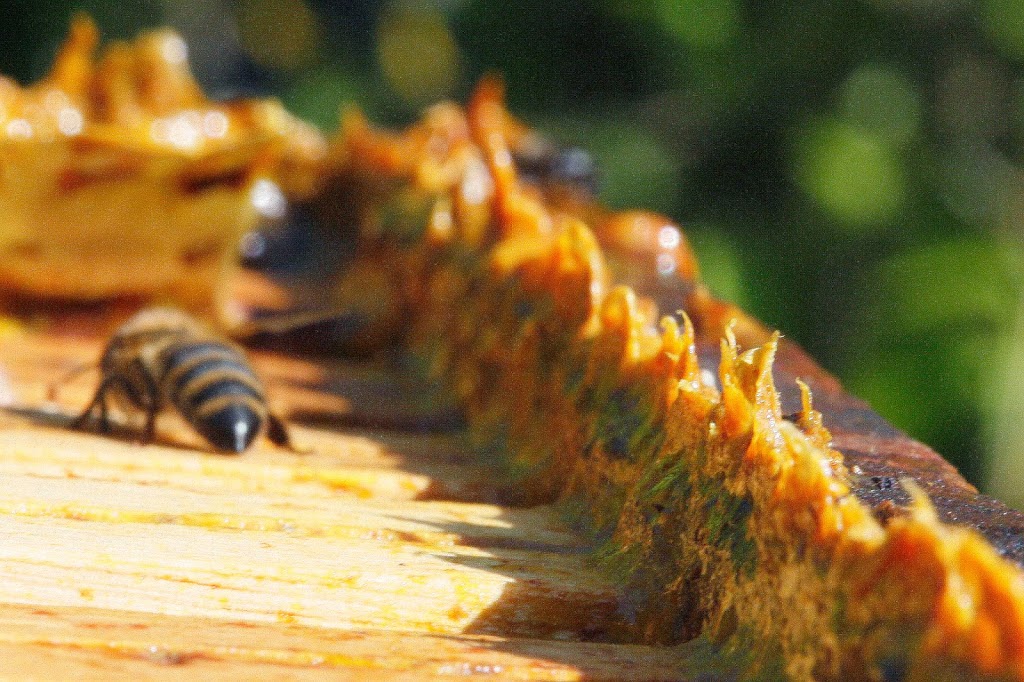
What is Propolis?
Propolis is a resin-like substance which is collected by bees from buds of cone-bearing and poplar trees. It consists of resins and vegetable balsams (50%), waxes (30%), essential oils (10%) and pollen (5%). The exact composition however depends on the local climate and geology. It is usually dark brown in colour but this depends on its natural origin. Above room temperature (20°C) it is sticky in consistency and at lower temperatures it becomes hard and brittle. Broadly, It is used by bees to seal unwanted open spaces in the hive. More specifically, it is used to fill gaps 6mm or less whereas larger spaces are filled with beeswax. For centuries it was thought to be important in protecting the hive from the rain and wind, but research in the 20th century showed that bees do well where ventilation is good during winter months. It’s now thought propolis has a range of roles including: increasing structural stability of the hive; improving defence by sealing alternative hive entrances; reducing hive vibration; reducing risk of disease (the biological role of tree resin is to seal tree wounds and defend against microorganisms and insects); for use in emergencies to seal the carcass of dead rodents or other hive invaders thereby maintaining cleanliness in the hive.
What are the health benefits?
Propolis has been used as early as 350BC when the Greeks used it for the treatment of abscesses and Assyrians used it for wounds and tumours. It is used for a wide range of medical conditions including cold sores, genital herpes, tuberculosis, certain cancers, ulcers and burns.
 How is it taken?
How is it taken?
In terms of side effects, in some people it can cause an allergic reaction particularly in those who are known to be allergic to bee products. It should be avoided in pregnancy and breastfeeding as not enough is known about it’s safety during these periods. The route of administration and frequency varies according to use: for cold sores, 3% propolis ointment is applied 5 times a day; for herpes infections, 3% propolis ointment is applied to blisters 4 times a day; following mouth surgery, propolis is given as a mouth rinse also containing water and alcohol.

How is it made?
Propolis extract is made by dissolving propolis harvested from the hive into alcohol and removing the precipitate by straining. Practically, the propolis is broken down into small marble sized pieces, to which a specific concentration of alcohol is added in a container. The container is then sealed and stored in a warm dark place and shaken a few times a day over a 2 week period. The liquid is then filtered and ready for use.
Disclaimer: Always seek medical advice before trying any new health or medicinal product.




